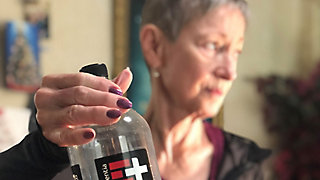ST. CLOUD, Fla. — Residents in St. Cloud have been dealing with water issues for years. Specifically, they say the water coming out of their faucets is often discolored.
The city has an explanation for the problem, but so far, they haven't been able to correct it.
- City: problem due to failed polishing filters
- Residue from what failed filters did not catch now in distribution system
- City exploring option of providing residents a credit for inconvenience
Resident Renee Bronson, who has two different immune deficiencies, recently saw what looked like black oil coming out of her faucet as she was about to brush her teeth.
“I just froze,” she said.
Bronson's case is being investigated by the City of St. Cloud. They believe this is an isolated incident.
However, many other residents are also facing water issues, and they have been for a long time. Specifically, they're seeing murky orange or brown water with resin coming out of their taps.
City leaders said the orange/brownish water (not Bronson’s black water) meets safety criteria required by the Environmental Protection Agency, making it safe safe to drink, but that doesn't make it any more palable.
Officials said the problem was caused by two polishing filters which started to fail two and a half years ago. The city tried fixing them, but the repairs were unsuccessful, so they bought new ones last summer at a cost of $1.5 million from budgeted funds, according to St. Cloud Interim Utilities Director Brian Wheeler.
What residents are seeing in their water recently is what the failed filters were supposed to catch. While the City has new units now, some of the residue got into the distribution system.
To get the resin out of the system, the city is spending about a half million dollars in contingency money on a special cleaning process used in Europe called "ice pigging," in which ice is pushed through the water lines to capture the particles and remove them from the water system.
The ice pigging will continue until March 23.
“The line that we’re doing out here on Old Canoe Creek Road is one of the main trunk lines that feeds the system,” Wheeler said. “By cleaning it out, hopefully as we do more flushing we will be flushing with clean water as opposed to bringing additional residue back into the system.”
As for Bronson, she's spent about $2,000 on new appliances and she's working around not being able to use tap water, something she hopes changes soon. But more importantly, she is worried about what this may mean for her health.
“I am concerned about what I may have been exposed to,” Bronson added.
The city is exploring the option of providing residents with a credit for the inconvenience.



